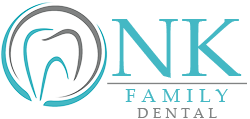
Temporomandibular disorder — commonly known as TMJ disorder — is a condition that doesn’t receive a great deal of attention. Unless you are one of the approximately 10 million Americans affected by it, that is. While some individuals experience constant jaw pain, others experience intermittent or episodic pain — which can range from a dull ache to sharp, searing pain.
The temporomandibular joint is the joint that connects the mandible (lower jaw) to the skull. The joint is located on both sides of the head, in front of the ears. By acting as a pair of sliding hinges, they allow you to open and close your mouth — which obviously is crucial for speaking, chewing and swallowing. As our blog post — “How To Know If You Suffer From TMJ Disorder” explains, the joints consist of three parts: a ball, a disc and a socket. The disc acts as a cushion for the ball and socket, but it can be disrupted — thereby causing pain in the jaw, ear and head.
Cleveland Clinic notes that TMJ disorder affects everyone differently. For some, it’s a temporary issue that goes away in a week or two. For others, it’s a chronic condition. Knowing as much as possible about TMJ disorder can help you have a productive conversation with your dentist or healthcare provider regarding the best course of treatment for your situation.
Signs and Symptoms of TMJ Disorder
The symptoms of TMJ disorders depend on the severity and cause of the individual’s condition. The most common symptom of TMJ disorders is pain in the jaw and surrounding muscles.
According to Mayo Clinic, symptoms of TMJ Disorder can include the following:
- Pain or tenderness in the jaw.
- Pain in one or both temporomandibular joints.
- Aching pain in and around the ear.
- Having a hard time chewing or pain while chewing.
- Aching facial pain.
- Locking of the joint, making it hard to open or close your mouth.
- Headache.
- Neck pain.
- Eye pain.
- Tooth pain that occurs along with jaw tenderness.
According to Mount Sinai, many TMJ-related symptoms are caused by the effects of physical stress on the structures around the joint. These structures include:
- Cartilage disk in the joint.
- Muscles of the jaw, face, and neck.
- Nearby ligaments, blood vessels, and nerves.
- Teeth.
Causes of TMJ Disorder
The exact cause of TMJ disorder is often difficult to determine. Symptoms can begin without obvious reason. Pain may be due to a combination of factors, such as genetics, arthritis or jaw injury. Some people who have jaw pain also tend to clench or grind their teeth (bruxism), although many people habitually clench or grind their teeth and never develop TMJ disorders. Other causes can include infection, certain autoimmune diseases and tooth/jaw misalignment.
According to the National Institute of Dental and Craniofacial Research (NIDCR), recent research suggests a combination of genes, psychological and life stressors — as well as how someone perceives pain — may play a part in why a TMD starts and whether it will be long lasting.
In addition, TMJ disorder is more commonly found in women between the ages of 18 and 44. Research is underway to determine if estrogen plays a role, as well as differences in TMJ structure and mechanics between females and males.
However, NIDCR reports that research does not support the common belief that a bad bite or orthodontic braces cause TMJ disorder.
Treatments for TMJ Disorder
There is currently no widely accepted, standard test available to definitively diagnose TMJ disorders. Your dentist or healthcare provider will note your symptoms and take a detailed medical history, and ask questions about your pain — including its location, when it occurs, what makes it better or worse, and if it stays in one area or spreads to other parts of your body. You will also be asked if you have other conditions, such as headache or back pain.
Your dentist or healthcare provider may order such imaging tests as an X-ray, CT scan or MRI. Should a physical examination or imaging results indicate TMJ disorder, treatment recommendations may be on the conservative side.
As the NIDCR states, “Because more studies are needed on the safety and effectiveness of most treatments for jaw joint and muscle disorders, experts strongly recommend using the most conservative, reversible treatments possible. Conservative treatments do not invade the tissues of the face, jaw, or joint, or involve surgery. Reversible treatments do not cause permanent changes in the structure or position of the jaw or teeth. Even when TMJ disorders have become persistent, most patients still do not need aggressive types of treatment.”
The following are common treatments for TMJ disorder. However, see your dentist or healthcare provider for a diagnosis and treatment plan first. Do not diagnose yourself. What you assume to be TMJ disorder could have another cause, or the treatments you choose for yourself could make the condition worse.
- Short-term use of over-the-counter pain medicines or nonsteroidal anti-inflammatory drugs (NSAIDs), such as ibuprofen.
- The use of a stabilization splint, or bite guard, that fits over upper or lower teeth. If this is recommended, it should be used only for a short time and should not cause permanent changes in bite.
- Botox injections. Although considered experimental, Botox is being used to treat TMJ disorder symptoms. If you feel this could help, discuss with your dentist or healthcare provider to see if it’s an appropriate option.
You can also practice self-help measures to alleviate discomfort. The NIDCR recommends the following:
- Eat soft foods; avoid hard, crunchy foods.
- Apply an ice pack during episodes.
- Avoid extreme jaw movements, such as wide yawning, loud singing and gum chewing.
- Learn techniques to relax and reduce stress, such as meditation or biofeedback.
Your dentist or healthcare provider also may recommend jaw exercises to relieve pain or discomfort. While such exercises can be found online, consult with a medical professional before beginning. Even with approval, TMJ exercises shouldn’t be done when you’re in severe pain.
The Take-Home Message
TMJ disorder is a painful condition that may be temporary or chronic. Although its cause isn’t always easy to diagnose, scheduling an appointment with your dentist or healthcare provider is essential in getting the appropriate treatment for your individual case.
At NK Family Dental, it is our mission to provide the highest quality and most compassionate oral care to our Chicago patients, including both dental and periodontal services. Our practice is trusted for advanced oral surgery procedures and comfortable root canal treatment.
Our team of experienced, dedicated dental professionals will help address your oral health concerns, and determine the best solution for you based on your individual situation. We strive to identify treatment options that fit your needs. Our dental specialists include our general dentist, Dr. Nilofer Khan, our endodontist, Dr. Sabek, and our periodontist, Dr. Amir Danesh. Dr. Danesh is a board-certified periodontist and Diplomat of the American Board of Periodontology. He has contributed to the publication of two books, as well as published over 20 papers in prestigious dental research journals.
We serve the neighborhoods of Logan Square, Bucktown, Humboldt Park, and Wicker Park with the dedication that’s earned us the reputation as the Best Dentist in Chicago!
We understand that the main concern you may have is cost, which is why we accept all major PPO plans for dental insurance and also offer our in-house dental plan. Please see our financing page for more information.
Schedule your visit through ZocDoc, or contact us directly. We look forward to treating you soon!
